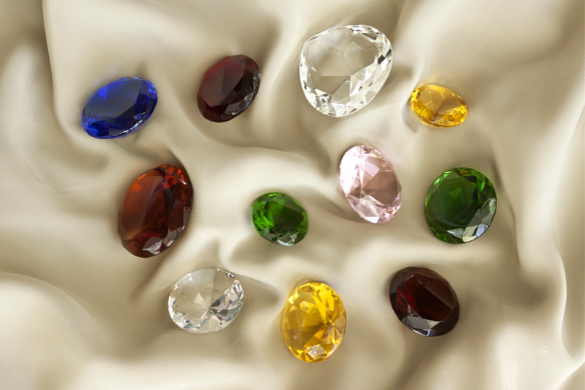Serious Tradeshow-Time Ahead – Go Head-On!

A lot of international gems and jewellery trade shows are around the corner. Especially from an exhibitor’s perspective – just participating is not enough. You will be investing time and money for every show that you participate in. Making the most of your investments and fully exploiting opportunities at a tradeshow is a more complex process than most people realise. It takes a lot of planning ahead of the show, smooth implementation during the show, and thorough, appropriate tailored follow-up after the show. Moreover, each show might require a slightly different approach.
Even as a trade-visitor, you will have limited time. So, you need to plan which booths you would like to visit and make business appointments ahead of time.
Some of the factors that one would need to plan about are:
PRE-SHOW:
Which shows to participate in: Because of the cost and time factors involved, no one can participate in every show. So, what factors would one have to consider before deciding which show to be at? Well, obviously the most important factor would be whether the visitor profile and the very show itself fits in with your business. If it is a very small middle-level show and you are a manufacturer of high-end jewellery or if you are into diamonds and it is mainly a coloured gemstones show, as simplified examples, it’s probably best that you stay away from such a show and invest your resources more wisely.
Producing new lines for a show: When it comes to the top shows, most exhibitors put their best foot forward. In order to compete, one should certainly do the same. If you are a jewellery manufacturer, presenting new products that showcase your company’s abilities is certainly an important way to do this. But, the number of products and kinds of products are important considerations. For example, when there is a slowdown in the economy and the trend is towards smaller pieces and smaller stones, coming up with too many large lavish pieces will have a detrimental effect, as orders are likely to be much lower or even non-existent. In addition, competitors will sweep away not only new business but possibly even your existing customers.
A good way to gauge what kind of products you should be introducing is to have a talk with your existing customers even before you design and produce your new lines ahead of a show or the show season. Ask them what they are currently looking for. For those operating is a specialised category. Like “only large stones”, or any other as their USP, they might want to make fewer pieces during a bad buying season. This will keep costs of inventory relatively lower. Needless to say, with less designs to showcase, pieces will have to be truly spectacular.
Connecting with people ahead of a show: It is an absolute must to connect with your important existing B2B customers and even people you buy from ahead of a show. Let people know about the show well ahead of time and formally invite them closer to the date. Organise for visitor passes ahead of time too. Make and stick to specific appointments with existing buyers.
Acquire a list of visitors from the show organisers. Send e-mail advertisements to the entire database letting them know where your booth is and give them a glimpse of what will be on offer. That way, visitors will know about your presence and potential buyers will factor some time for visiting your stall. Have a lot of capable staff available at your booth to handle possible large footfall.
DURING THE SHOW:
System of assimilating information to follow up on: Make sure you ask for each visitor’s business card. Jot down what they say their interests are. Register all this information somewhere in an organised manner. Plan how you will do this ahead of time and train your managers and staff about this in advance.
Visiting other booths: Ever so often, exhibitors don’t take the trouble to visit other booths. Doing so is very important because it gives you a good idea about what kinds of products competitors are making. One should see which booths are really doing well and analyse why. One should figure out the kinds of products visitors seem to be interested in. Visitors to your own booth will only help you acquire a narrow perspective.
AFTER THE SHOW:
Follow-up emails and phone calls: You should send out follow-up emails ideally within 5 days of the end of the show. These should be tailor-made, based on your interactions with specific visitors and on their interests. If you can factor-in little parts of a specific conversation acquired from your register, your potential customers will be really impressed! Do not delay your follow-up emails, or you will lose valuable business to competitors who have been more efficient than you. Hire extra hands if you need to, but get the follow-up emails done in a great way.
Important deals that have come through or might need a little push to be closed, warrant a personal phone call from an owner, director or top level manager within a day or so of the end of the show.
Tradeshows offer unparalleled advantage because your target audience and all kinds of associates related to your business are under one roof for those few days. Everyone is in the frame-of-mind to listen and buy – That’s specifically what they are attending for! There’s no other place where you will have so many new sales leads at one time. Plan for shows ahead of time so that when the season is done, you can say to yourself not “We participated” but “We did our BEST”!
All the best to y’all from GemAtlas!

